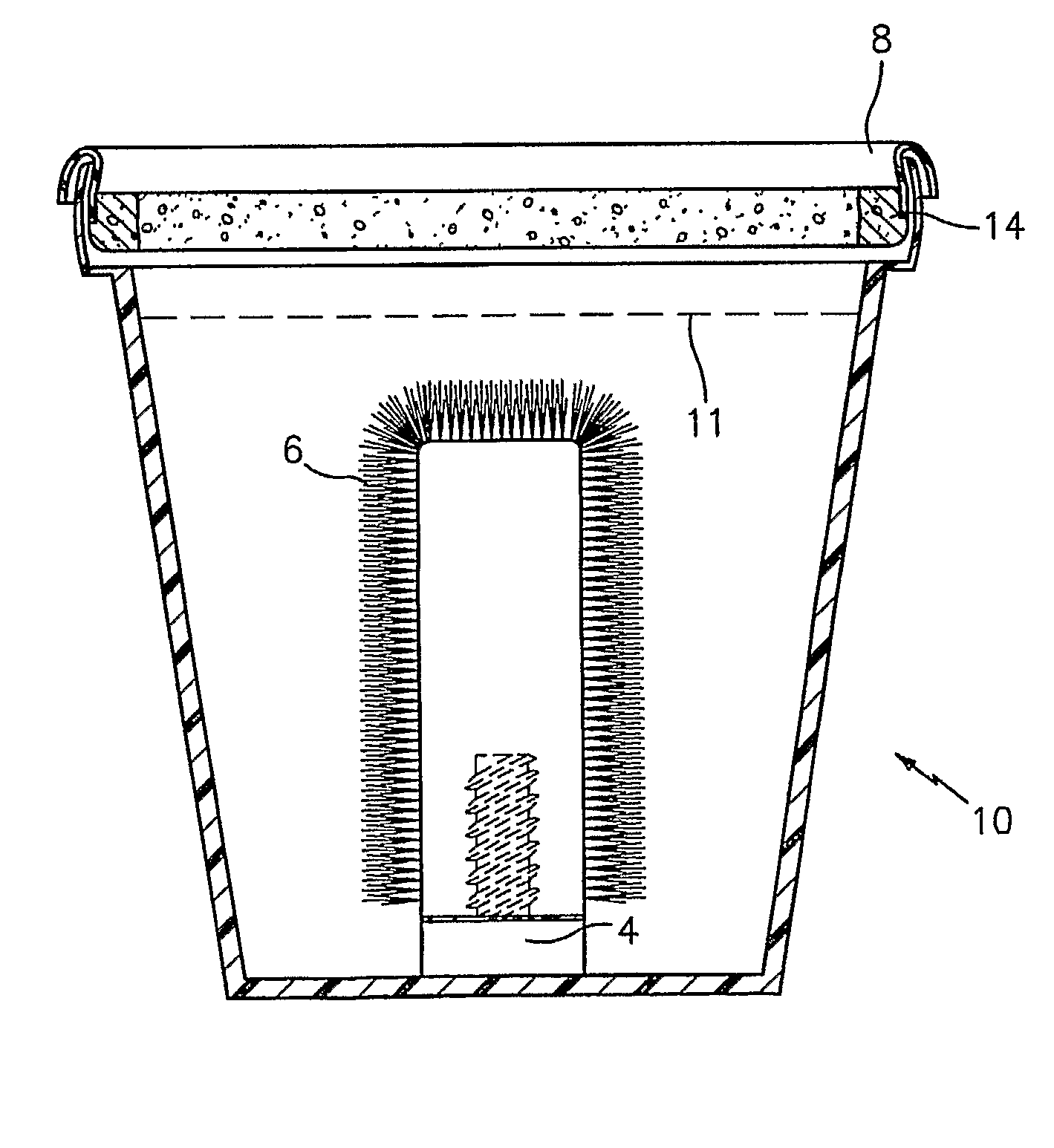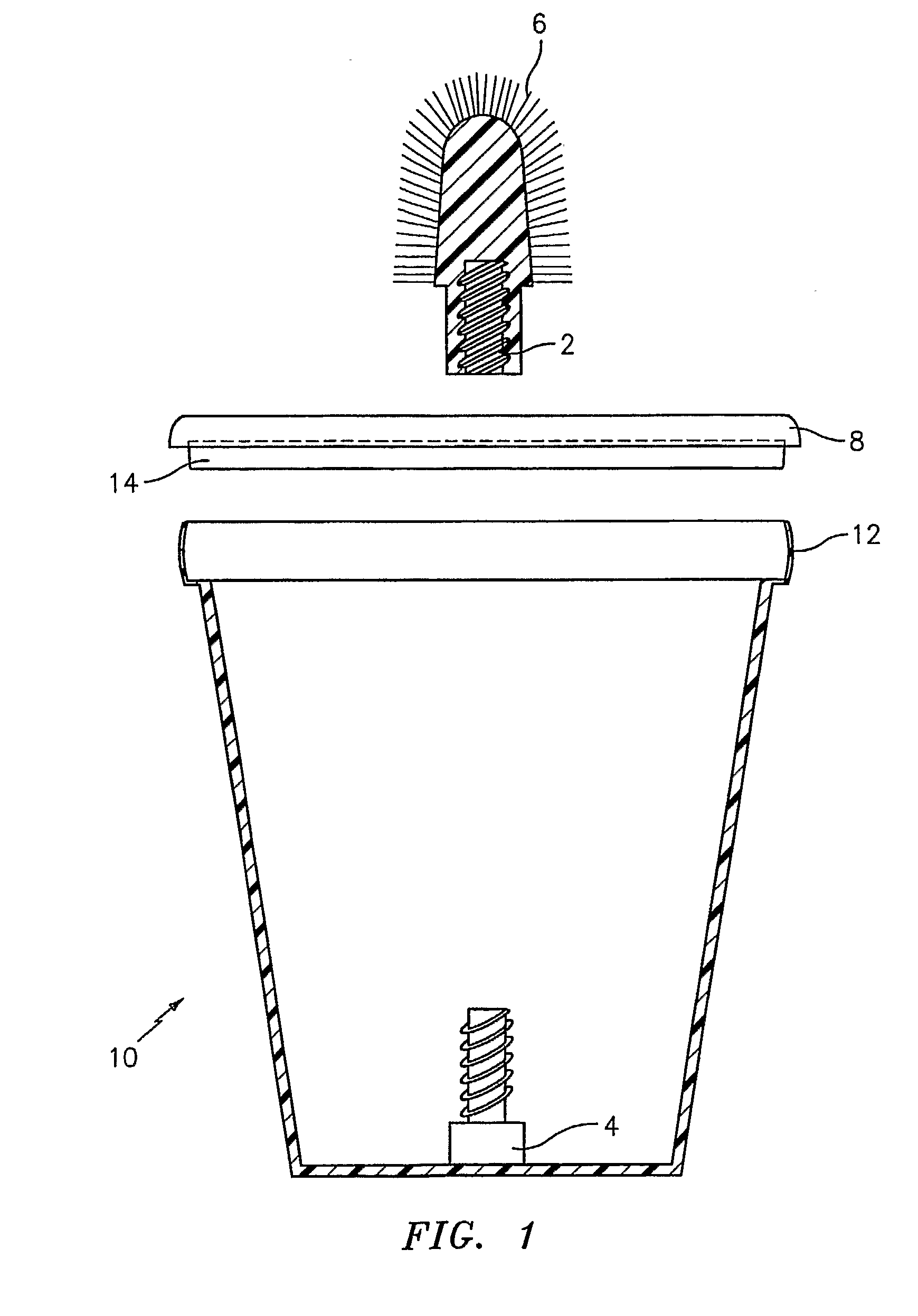Bucket Arrangement and Method of Using the Same
a bucket and a technology of arranging it, applied in the direction of cleaning with liquids, carpet cleaners, cleaning equipment, etc., can solve the problems of increased the chance of serious cut or abrasion from sharp surfaces, increased worker's compensation rates, and increased time and productivity
- Summary
- Abstract
- Description
- Claims
- Application Information
AI Technical Summary
Benefits of technology
Problems solved by technology
Method used
Image
Examples
second embodiment
[0069]FIGS. 5 and 6 depict the present invention, in which the first wiping element 20 and the second wiping element 22 are mounted on a side of the container 10. As best seen in FIG. 6, the first wiping element 20 and second wiping element 22 can be mounted on a hard plastic base 24 and are then slidably engaged with the container 10 via a double nub sliding rail track 26 and between a molded slide rail element 28. Other means of mounting the first wiping element 20 and the second wiping element 22 would also be known to those skilled in the art. In this embodiment, the first wiping element 20 is entirely submerged in the liquid (i.e., cleaning solution) when the container 10 is filled and the second wiping element 22 has at least a portion that extends above the surface of the liquid in the container 10.
third embodiment
[0070]FIGS. 7 and 8 depict the present invention, in which the first wiping element 32 and the second wiping element 34 are mounted adjacent to each other on a side of the container 10. As best seen in FIG. 7, the first wiping element 32 and the second wiping element 34 can be mounted on a one-piece hard plastic base 36 and are then slidably engaged with the container 10 via molded slide rails 38 and 40.
fourth embodiment
[0071]FIGS. 9A-9C, 10, and 11 depict the present invention, in which the second wiping element 42 is disposed between two first wiping elements 44 and 46 and the two first wiping elements 44 and 46 and the second wiping element 42 are mounted on an O-ring 48 that can be disposed on a rim 50 of the container 10. The mounting means are typically a plurality of molded securing clips 52, although other mounting means would also be known to those skilled in the art.
[0072]FIG. 12 is a view of a sanitizing solution that is usable with the system of the invention. As seen in FIG. 12, the sanitizing solution may be made available in pre-measured portion packets 60 in order to avoid waste. If a powdered detergent such as Mikro-Chlor® is used, the detergent packets may be portioned into 2-ounce packets for the container described above for use at a culinary workstation. Other pre-portioned packets 60 may be prepared for different size buckets and different detergent solutions. In the alternati...
PUM
| Property | Measurement | Unit |
|---|---|---|
| height | aaaaa | aaaaa |
| height | aaaaa | aaaaa |
| width | aaaaa | aaaaa |
Abstract
Description
Claims
Application Information
 Login to View More
Login to View More - R&D
- Intellectual Property
- Life Sciences
- Materials
- Tech Scout
- Unparalleled Data Quality
- Higher Quality Content
- 60% Fewer Hallucinations
Browse by: Latest US Patents, China's latest patents, Technical Efficacy Thesaurus, Application Domain, Technology Topic, Popular Technical Reports.
© 2025 PatSnap. All rights reserved.Legal|Privacy policy|Modern Slavery Act Transparency Statement|Sitemap|About US| Contact US: help@patsnap.com



